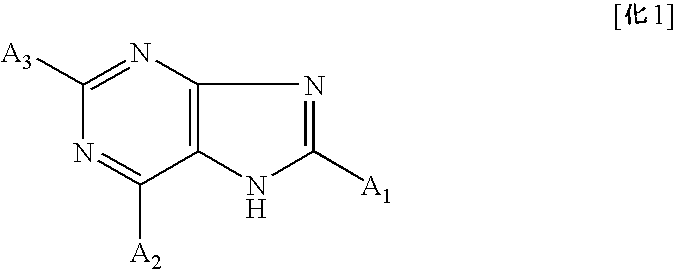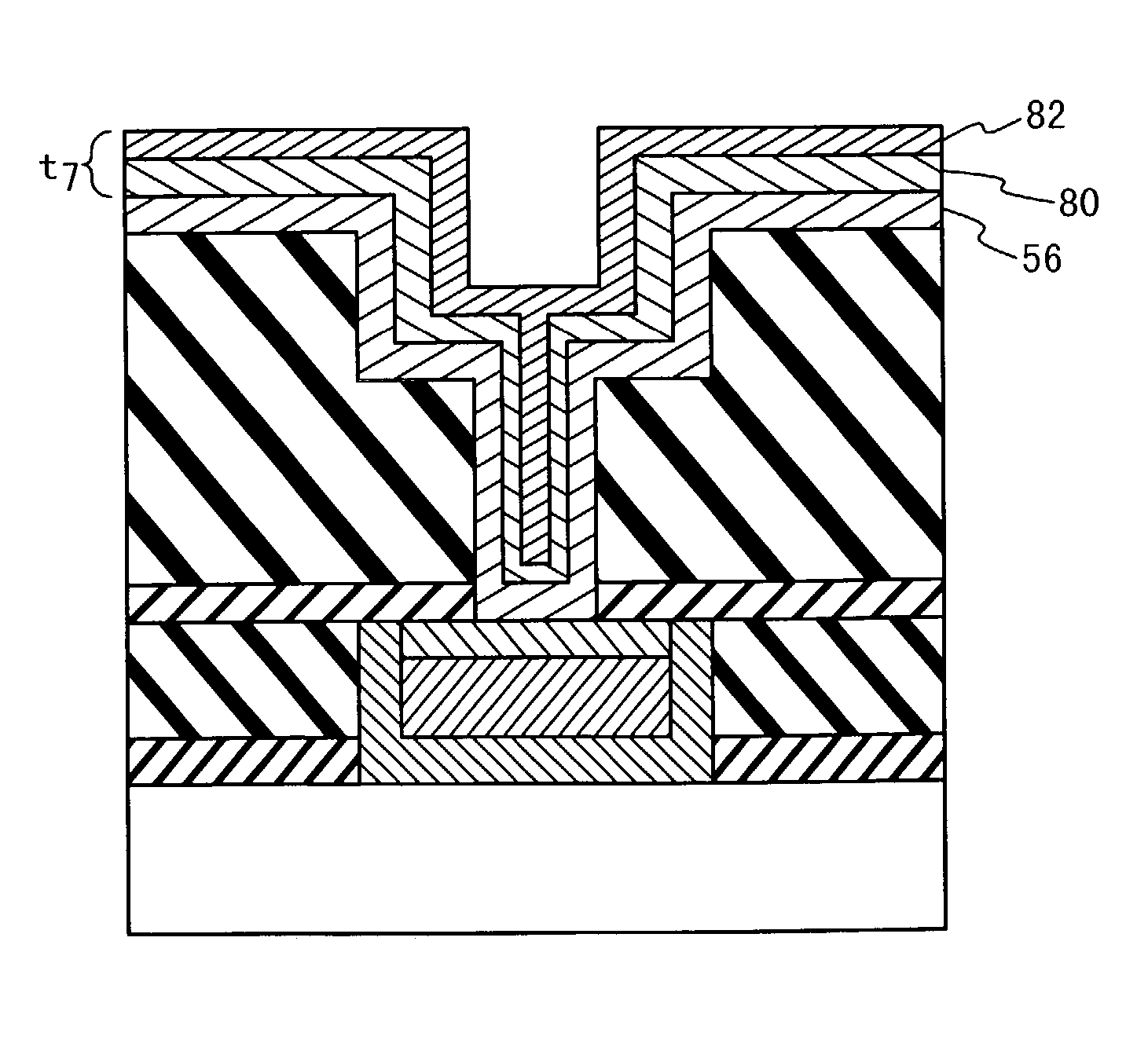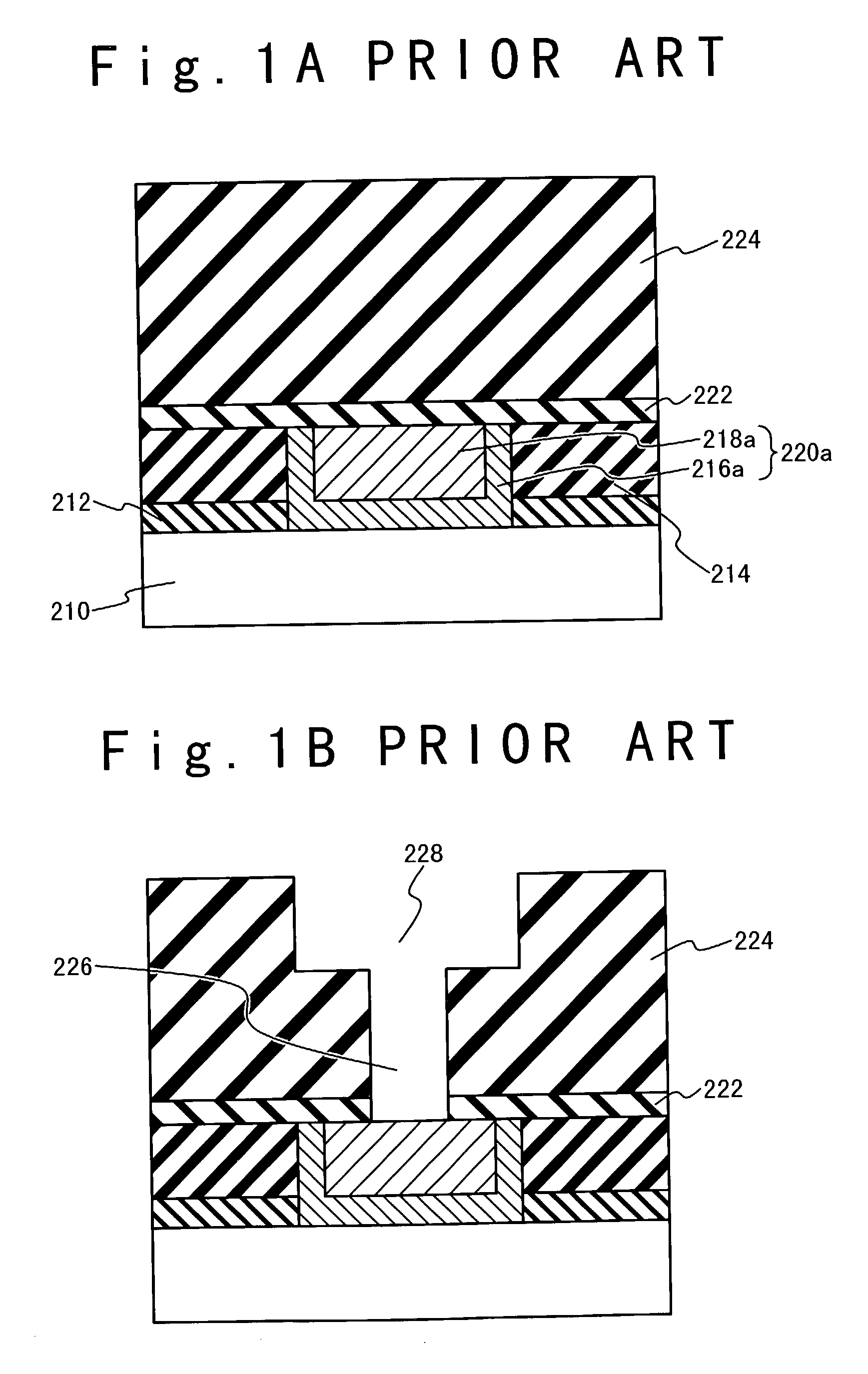Semiconductor device and manufacturing method for the same
- Summary
- Abstract
- Description
- Claims
- Application Information
AI Technical Summary
Benefits of technology
Problems solved by technology
Method used
Image
Examples
first embodiment
[0157] FIG. 3 is a cross sectional view showing the wiring line structure in the present invention. A first laminate layer 14a in which a first SiCN film 12, L-Ox film and a SiO.sub.2 film are laminated in this order, and a second laminate layer 14b in which a second SiCN film 16, a silicon oxide film 18, a third SiCN film 20 and a L-Ox film and a SiO.sub.2 film are laminated are laminated on an insulating film 106 on the silicon substrate (not shown). In the first laminate layer 14a and the second laminate layer 14b, the first copper wiring line 22a and the second copper wiring line 22b are formed, respectively.
[0158] The first copper wiring line 22a are formed of a tantalum-based barrier metal film 24a and a copper film 26a. In the silicon oxide film 18, a connection plug 28 is formed to connect with the surface of the first copper wiring line 22a. The connection plug 28 is formed of a tantalum-based barrier metal film 30 and a copper film 32. In the second laminate layer 14b, the...
embodiment 2
[0173] The second embodiment is different from the first embodiment in that BTA is evaporated and removed through a heating process at about 350 C instead of the ammonia plasma process, before the siliciding process of the surface of the copper film 26a and the surface of the copper film 26b. Through the heating process, the wiring line structure shown in FIG. 3 is formed. It should be noted that the heating temperature at which BTA is evaporated and removed may be from 150 C to 450 C. By the fluorescence X ray analysis of the formed wiring line structure, the existence of CuSix is confirmed.
[0174] By carrying out the ammonia plasma process for the evaporation and removal of the BTA as in the first embodiment, the siliciding process can be carried out while BTA is removed. Therefore, it is possible to control the siliciding process such as a film thickness control of the Cu silicide. Also, by carrying out the heating process for the evaporation and removal of the BTA as in the secon...
embodiment 3
[0175] FIG. 5 is a diagram showing the wiring line structure in the third embodiment. The third embodiment is different from the first embodiment in that the first Cu silicide layer 34a and the second Cu silicide layer 34b are not formed, and that the BTA anti-corrosion processing is not carried out. The description of the same components of FIG. 5 as those of FIG. 3 will be omitted by allocating the same reference numerals.
[0176] In the third embodiment, the processes are carried out as in the first embodiment until the CMP process to the copper film 26a of the first copper wiring line 22a process. Subsequently, the second SiCN film 16 and the silicon oxide film 18 are formed without carrying out the siliciding process of the surface of the copper film 26a. Before the second SiCN film 16 is formed, a surface treat process of the copper film 26a of the first copper wiring line 22a is carried out by the ammonia plasma process. The process after the silicon oxide film 18 is formed is ...
PUM
 Login to View More
Login to View More Abstract
Description
Claims
Application Information
 Login to View More
Login to View More - R&D
- Intellectual Property
- Life Sciences
- Materials
- Tech Scout
- Unparalleled Data Quality
- Higher Quality Content
- 60% Fewer Hallucinations
Browse by: Latest US Patents, China's latest patents, Technical Efficacy Thesaurus, Application Domain, Technology Topic, Popular Technical Reports.
© 2025 PatSnap. All rights reserved.Legal|Privacy policy|Modern Slavery Act Transparency Statement|Sitemap|About US| Contact US: help@patsnap.com



